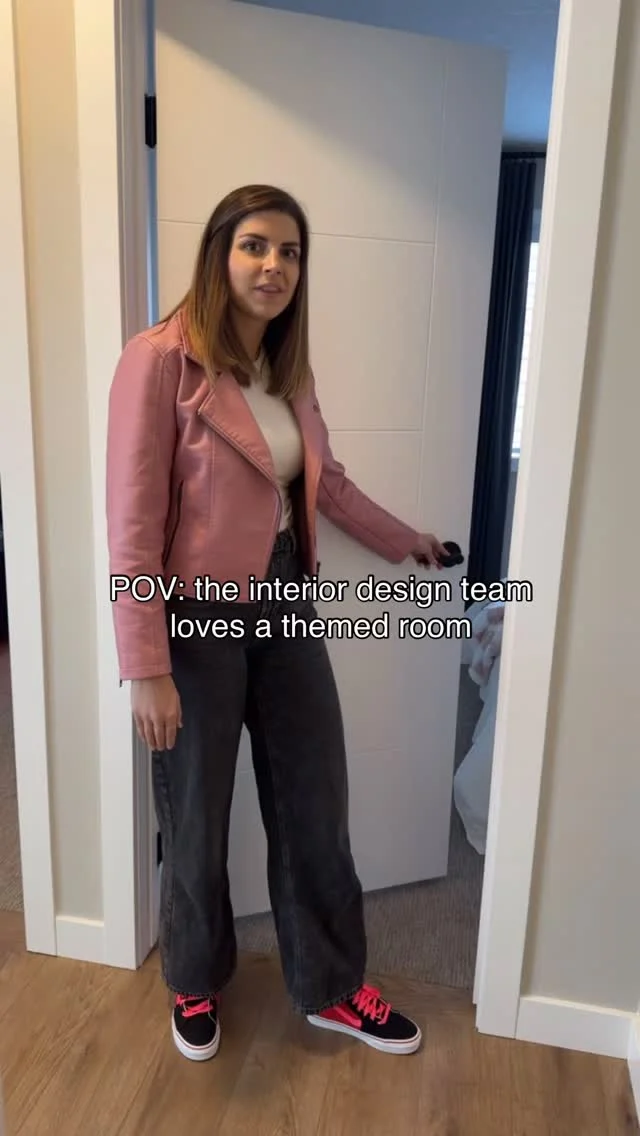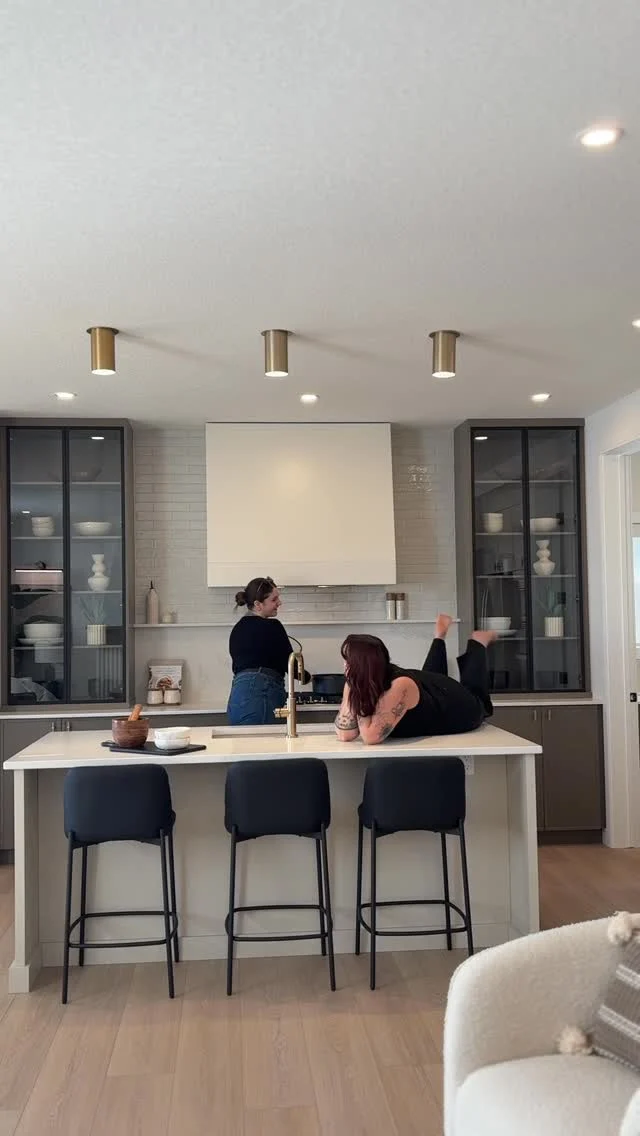It’s home-buying time!
Buying your first home is exciting and can be a lot of fun.
However, the home-buying process requires you to know a lot of information. From mortgages and property tax to home designs and community features, there’s a wealth of details to navigate to ensure you make informed decisions that align with your needs and budget.
But don’t let the intricacies of the home-buying process stress you out!
We’ve specifically created this list of 101 must-know home-buying tips to guide you through your entire buying and building process.
Let’s jump in!
Mortgage-Related Tips
These first-time buyer mortgage tips will make the process of obtaining a mortgage easier.

1. Know the Difference Between Pre-approval and Pre-qualified
Before meeting with your mortgage lender, it’s a good idea to learn the difference between pre-approval and pre-qualified.
Pre-approval is a guesstimated price of how much you can afford based on your current income, credit score, credit history, and more. On the other hand, pre-qualified is an estimated price of how much you can afford without providing a credit history.
Due to the necessity of providing more information, mortgage pre-approval is more legitimate and exact than pre-qualified.
2. Get Pre-Approved by Your Mortgage Lender
Before you go home shopping, get pre-approved by your lender. When you get pre-approved, your lender will tell you the exact amount of mortgage you qualify for. This information will help you find a home that fits within your price range.
3. Consider Spending Less Than Your Approved Mortgage Rate
When you purchase a home, you will have to pay more than the mortgage. For example, you will have to pay for property taxes, furniture, utilities, lawyer fees, and more.
Spending less than your approved mortgage rate can help you budget for these additional expenses.
*When you purchase a home from Shane Homes, we will cover your lawyer fees if you use a Shane-appointed lawyer.
4. Understand The Difference Between Mortgage Types
Knowing the difference between mortgage types is important to ensure you choose a mortgage that best suits you and your financial situation. There are a few mortgage options, but the primary ones you will see are fixed and variable. Here’s a brief explanation of these types of mortgages:
Fixed-Rate Mortgage
A fixed-rate mortgage is a mortgage where the interest rate stays the same throughout the term of the loan.
For example, if you get a mortgage with a 5.99% interest rate, you will maintain that rate throughout the duration of the term (typically around 5 years.) After your term, you will renew your mortgage and likely get a new interest rate based on the current going rates.
The benefit of a fixed-rate mortgage is that you know exactly how much your mortgage payment will be for the duration of the term.
Variable-Rate Mortgage
A variable-rate mortgage is a mortgage where the interest rate fluctuates based on the current going rate.
For example, if the mortgage rate is 5.99% in July, you pay 5.99%, then if it goes down to 5.29% in September, you pay 5.29%.
The benefit of variable-rate mortgages is that if the mortgage rates dip, you can take advantage of the lower rate.
5. Recognize That You May Require Mortgage Insurance
If your down payment is less than 20% of the purchase price, you may need to pay mortgage default insurance.
Mortgage default insurance protects the bank in the unlikely event you default on their mortgage. You can purchase this insurance through your lender or mortgage company.
Pro tip: it’s typically cheaper through your private mortgage company.
6. Use a Mortgage Calculator
Once you have been pre-approved and have a good idea as to what total price you can afford, you can calculate how much your mortgage rate will be on a weekly, bi-weekly, or monthly basis.
The calculator will also break down how much principal vs. interest you will pay over the entire life of your mortgage loan. There are a variety of mortgage calculators available online, including the CMHC mortgage calculator.
Money-Related Tips
A home is the most significant purchase you’ll ever make, so it’s important that you know all about the first-time home buyer advantages, saving plans, and budgeting tips and trips.

7. Tax Credits
Ensure you are aware of the different tax credits available in Canada.
For example, you may be able to use the home accessibility tax credit or the first-time home buyers credit to benefit you financially. For more information about the available tax credits and other first-time home buyer benefits, you can visit the Government of Canada website.
8. Take Advantage of the First Home Savings Account (FHSA)
The FHSA is a savings account, similar to a TFSA, where a first-time buyer can use a tax-free savings account to fund the cost of building a new home.
9. Budget for Property Tax (GST)
All houses have different property taxes.
Property tax is a tax homeowners pay based on the assessed value of the home. Typically, property tax is around 0.5% to 2.5% of a home’s assessed value.
When you meet with your lawyer, they will provide you with the exact amount of property tax you need to pay. You can then sign up for the Tax Instalment Payment Plan (TIPP), the City of Calgary’s property tax payment method, to set up direct payments.
10. Maintain Your Credit Score Throughout Your Building Process
Although your bank or lender may pre-approve you for your mortgage, they still need to provide a final approval closer to your move-in date.
After you get pre-approved, there are a few general guidelines to follow:
- Don’t change jobs
- Don’t accumulate more debt
- Don’t make any large purchases
- Don’t apply for additional lines of credit
The bank may reject your final mortgage approval if your credit score is impacted by larger purchases or debt.
11. Ensure Your Monthly Mortgage Payments Are Feasible
Along with paying less than your mortgage approval rate, ensure the monthly mortgage payments that you will be paying are achievable based on your combined household income and spending habits.
Your lender will run your debt-to-income ratio (DTI), which is when they take your monthly debt payments and divide them by your gross monthly income.
The percentage of your debt-to-income ratio is then used to determine how much money you can comfortably afford to borrow.
As a general rule of thumb, for insured borrowers, the desirable DTI ratio is up to 39%, while for those without insurance, a DTI ratio as high as 44% is acceptable.
12. Budget for Move-In Expenses
Moving expenses can pile up!
If you need a moving truck or moving company to transport your furniture or you need to purchase new furniture or appliances, ensure you budget for your extra moving expenses.
13. Shop Around for the Best Interest Rate
When applying for a mortgage, a mortgage broker may become your best friend.
Interest rates can vary between different lenders, so make sure you take the time to shop around and find the best interest rate on the market. A mortgage specialist will do the heavy lifting to find the best rate for you.
At Shane Homes, we partner with trusted mortgage brokers who will provide an easy and transparent way to get your best mortgage.
14. Buy Proper Home Insurance
Home insurance is another payment that you need to consider.
Before closing on a home, your bank and lawyers will need to ensure you have appropriate insurance coverage.
Home insurance is fairly easy to obtain, and if you currently have a car payment, you can bundle your insurance and likely get a discount. Note that if you are buying a home or condo as an investment, you will need different insurance for a rental property.
15. Deal With Existing Debt Before Your Home Purchase
It’s important to pay off excessive debts, like credit card debt, or you may not be able to get pre- or final approval on your new home.
16. Take Advantage of a 5% Down Payment
In Canada, first-time home buyers have an advantage as they can put down a minimum down payment of 5% of the home’s purchase price.
This lower down payment can help you purchase a home faster, but it also makes your mortgage payments higher.
17. Understand the First-Time Home Buyers’ Plan
The Home Buyers’ Plan (HBP) is a program that allows you to take money from your registered retirement savings plans (RRSPs) to buy a home.
With this plan, you have to pay back the amounts withdrawn within 15 years.
Talk to your lender about the best option based on your financial situation to see if using the Home Buyer’s Plan is beneficial for you.
18. Budget for Utility Costs
Utilities are tricky to budget as you won’t truly know the cost of utilities until you move into your new home.
The positive about buying a new home is that they are commonly more energy efficient than older homes, so the utilities tend to be cheaper.
However, you can go to any major utility provider website, such as Enmax, Direct Energy, or EPCOR, and they list their fixed going rates for natural gas and electricity.
19. Budget For New Furniture
Ensure you have money set aside for any additional furniture that you have yet to purchase.
20. Budget an Emergency Fund
It’s important always to have an emergency fund, so should something unexpected happen, you have a financial cushion.
It’s typical to have an emergency fund that is around 3-6 months of your total monthly bills.
21. Put as Much Money Down as You Can
Unless you use the first-time homebuyer plan, try to put as much money into your down payment as possible.
Higher down payments will reduce your overall mortgage payment, which can benefit you in the long run.
22. Take a Hard Look at Your Budget
Once you have a better idea of all of the payments you will have, make a spreadsheet so you can get a clear picture of how much money you will be spending versus earning.
In your spreadsheet, outline your different payment types and payments, such as:
- Residence Payments:
- Mortgage payment
- Home insurance
- Utilities
- Property tax
- Mortgage insurance
- Transportation Payments:
- Car loans
- Vehicle insurance
- Vehicle maintenance
- Services:
- Internet
- Mobile phone
- Streaming services (Apple TV, Netflix, Crave, etc.)
- Personal:
- Groceries
- Entertainment
- Gym memberships
You should add up all of these payments and determine your total expenses to ensure they are less than your total net income.
23. Budget for All Closing Costs
First-time buyers may not be aware of all of the costs associated with closing on a home. Here’s a list of common closing cost items:
- Real estate lawyer fees
- Mortgage application and processing fees (some lenders may waive these fees)
- Home inspection fee (if buying an older home)
- Appraisal fee (if buying an older home)
- Title insurance
- Property survey
- Home insurance
- Mortgage default insurance
- Moving expenses
PS: If you’re moving to Alberta from Ontario, note that the land transfer tax is not something you need to worry about.
If you have any questions about closing costs, feel free to ask your lender, lawyer, or Area Manager for more information.
Connection-Related Tips
Throughout your home-buying process, you will meet with a variety of different real estate professionals who all play a significant role in your home-building and buying process. Consider these connection-related tips for your home-buying journey.

24. Connect with a Professional To Assist You With Your Purchase
When you’re ready to purchase a ready-to-build home, connect with a Shane Homes Area Manager. These professionals can help determine the best home model and community for you and your family.
25. Connect With a Reliable Lawyer
Find a lawyer that you enjoy working with and that suits your needs. We recommend reaching out to friends and family or forums like Facebook Groups or Reddit to see some reliable lawyers in Calgary.
Alternatively, some home builders, like Shane Homes, cover your legal fees provided that their lawyer is utilized in the purchase.
26. Pick a Home Builder that Meets Your Needs
Some home builders, like Shane Homes, have a variety of perks that new homeowners can take advantage of. For example, when you purchase a house from Shane Homes, you will be assigned a concierge who can help you throughout your entire moving process. They can:
- Order mail keys
- Set up utilities
- Set up internet
- Order garbage and recycling bins
- Set up a moving company, and more!
Also, ensure you pick a home builder who cares about your home and is just as excited as you are about building your dream home.
27. Connect With a Lender That Cares About Your Journey
It’s important to choose your lender wisely, as they can make or break your home-buying journey. Try to find a lender that you can connect with on a personal basis, one who will advocate for you and work with you to hammer out the best terms for you and your unique life situation.
28. Meet With a Knowledgeable Design Team
When you pick out your home’s design aspects, ensure you choose a trusted design team.
At Shane Homes, our design team, composed of individuals who geek out on all things design, is here to provide you with excellent advice to help you design the home of your dreams. With an inspiring 5,000 sq. ft design studio, you can make your interior design vision come to life with our expert guidance.
29. Work with Lenders, Builders, or Real-Estate Agents That You Trust
Ensure the builders, real estate agents, and lenders you choose to work with are reputable and trustworthy. You may want to check out reviews to learn more.
Buying a house is a significant investment, and you want to be sure you’re working with reliable professionals throughout the process.
Community-Related Tips
Finding a community that suits you and your family is extremely important.
The following are tips to help you consider your wants and needs in your new community.
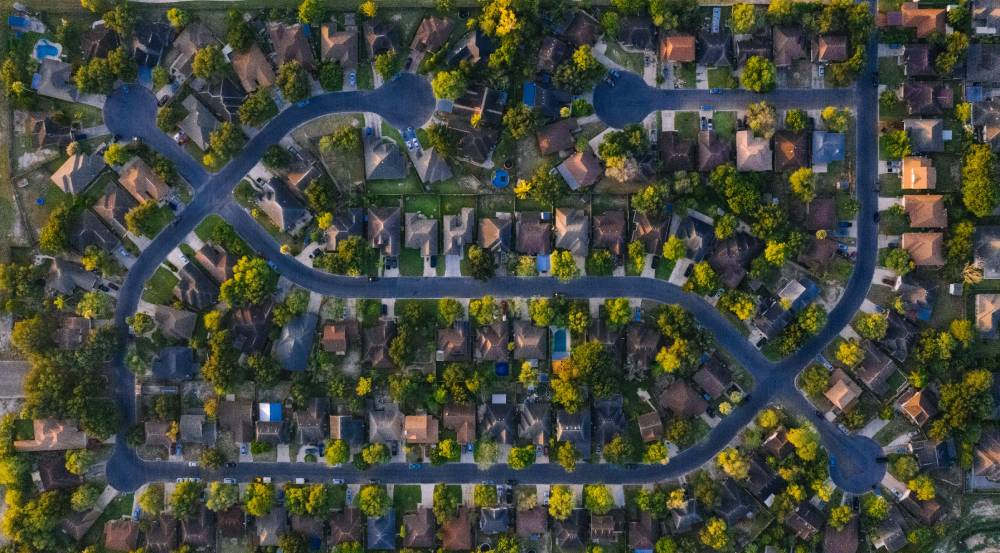
30. Do Your Research to Find an Area That You Like
Figure out what your must-haves in a community are. You may want paved walking paths, proximity to the grocery store, or to back onto an environmental reserve.
Some new communities you may want to consider moving to include:
- Northwest: Ambleton, Glacier Ridge
- Northeast: Cornerstone, Cornerbrook
- Southwest: Aspen Spring Estates, Belmont, Creekview, Pine Creek, Sirocco, Vermilion Hill
- Southeast: Legacy, Wolf Willow
31. Think about the Future of the Neighbourhood
Prior to purchasing in a community, do some digging.
Will there be new shopping centres? Major road developments? A gas station? New amenities, schools, close transportation, and various facilities can boost the price of your home over time.
You can look through city records, speak to your Area Manager, or connect with a local real estate agent to find out this information.
32. Learn if Your Community is Mainly Renters or Owners
Your neighbours can make a significant impact on your home! Homeowners tend to care a bit more about the neighbourhood than renters as they have more investment in the property.
33. Look into Schools Within the Community
In a new community, ensure you know if there will be any schools close by or if they will develop any in the near future. Schools are a great asset for the community and can increase the value of your home over time.
34. Join the Community Facebook Group
Neighbourhoods often have local conversations about current issues or updates within the community. Joining these groups will allow you to stay up-to-date on the area’s strengths and challenges.
35. Understand if Your Community has Mandatory Fees
Double-check if your community requires you to pay HOA fees. Communities with specific amenities like lakes will require you to pay regardless of whether you use the amenity or not. Make sure you understand the obligations and the value of these fees.
Home Location Tips
Finding the location that best fits your day-to-day lifestyle is very important. Since you will be residing in your home for a long while, you want a home that meets your needs. Consider the following tips when you decide where you would like to move.
.jpg)
36. Consider the Commute to Work
It might be important for you to move to a location that is close to your workplace. If you live somewhere across the city, anticipate the time you will spend commuting and the cost of gas you will be spending.
37. Do your research on Flood Plains
Flood-risk homes can boost your insurance costs and run you the risk of having flood events in the future. To check if your home is in a flood plain in Alberta, you can check the City of Calgary website.
38. Note Which Way the Front Door Faces
Strategically buy a lot that faces a direction you like best.
A popular opinion is buying a south-facing lot where your backyard faces the sun all day long. If you enjoy the sun in your backyard all day, can you put up with the snow and ice on your driveway all winter long due to shadows?
39. Check to See if Your Community is Under a Flight Path
Check the City of Calgary website to discover if your neighbourhood will have air traffic noise, then decide if this is something you would be okay living with.
40. Consider What’s Behind Your Home
Consider what your home backs onto. Ensure you are happy with your view, whether it is trees, a creek, other houses, or maybe it doesn’t matter to you.
41. Check to See if There are Any Easements on Your Property
Check the current Real Property Report (RPR) and title to understand any easements that might exist on the property that could impact your future plans.
42. Consider How Far You Are From the Highway
If you do a lot of commuting, ensure you are near a highway or major road to help make your driving time more efficient.
One of the pros of living in Calgary is that we have many major roads, like the new Ring Road, that can connect you to almost anywhere in Calgary in under an hour.
43. Consider Street Parking for Guests
If you are often a party host or have multiple cars, ensure there is parking outside or near your home.
44. Live Close to Emergency Services
Make sure you know where the nearest emergency services are in your community. This will put your mind at ease, and in some cases, if you live close to a fire hall, your insurance may be cheaper.
45. Ensure You’re Aware of Gas and Utility Lines in and Around Your Property
Make sure you know where any gas or utility lines are located and ensure they are marked. This may impact your future plans of planting trees, putting in driveways, accessory buildings and more.
In Alberta, you can contact Utility Safety to ensure you know the whereabouts of these lines.
46. Evaluate the Test Walk Score
Discover what your test walk score is in your new community. This score will provide you with information on how far shopping centres or grocery stores are based on walk time. It will also provide information about nearby train stations or bus stops.
Tips Related to Your Home Layout and Lot
If you are building your home, here are tips to help you decide your must-have layout and lot features.
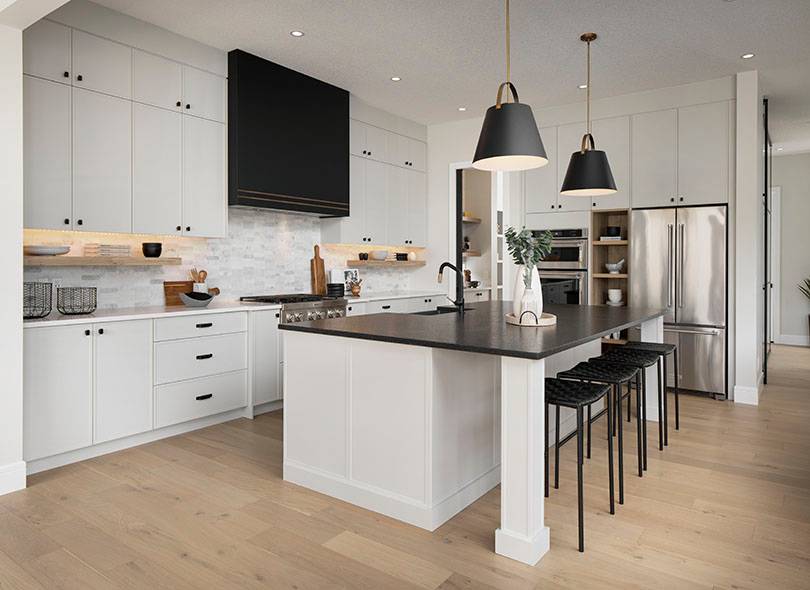
47. Consider if You Want a Garage
Is a garage important to you? Do you work on your car yourself or enjoy not having to brush snow off your vehicles in the winter?
48. Decide Which Lot Accommodates You and Your Family Best
Upon choosing which lot you would like to purchase, evaluate the surrounding area and the size of the lot.
If you have kids and pets, you may want to consider a corner lot with a large backyard to have more space for outdoor activities.
49. Decide How Many Bedrooms You Want
If you are planning to have children or have many hobbies that require more space, decide how many rooms will best fit your growing family. It’s better to plan for more rather than having less space.
50. Consider the Amount of Bathrooms You May Need
If you have a large family or you are a constant party host, you may want to consider adding more bathrooms to accommodate the needs of your family or guests.
Or, if you’re a single person who doesn’t host many guests, maybe you are okay with a powder room and en-suite bathroom.
51. Consider Where You Want Your Laundry Room
In new homes, the laundry room is typically upstairs near the bedrooms. Determine if you like having the laundry upstairs or prefer it on the middle or basement floor to give you extra space upstairs.
52. Consider if You Want Your Basement Developed
Basement development is often not included in the initial home purchase price. Some families decide to develop their basements right away, but some believe they may not use their basements and decide to upgrade later down the road.
Developing your basement with the rest of the home build is significantly more convenient, and you can then roll the cost of the basement development into your mortgage.
53. Decide What Type of Landscaping You Want
Builders typically have landscaping companies and references ahead of time; if you decide to use their recommendations or not, the option is available for you.
In new communities, you will often have a set date of when you need to have your landscaping completed. It is best to look into options beforehand so you can meet this deadline.
Home Style, Design, and Size-Related Tips
When you’re building your home, there may be some conflict between what home you need versus what home is better for your lifestyle. Discover home style and size-related tips.
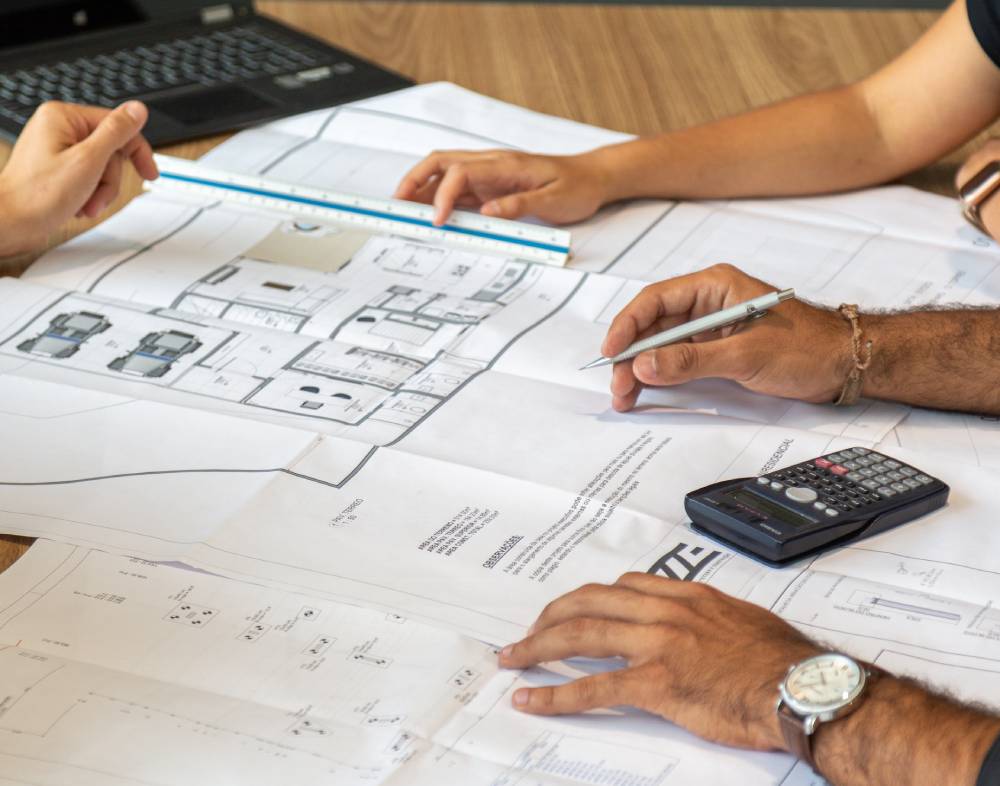
54. Home Size Matters
Ensure you think about your long-term plans. If you know you are about to have children, buy a home that is big enough for your growing family.
55. Consider Adding a Built-in Bar
Adding a built-in bar can transform your living space into the ultimate entertainment hub if you often entertain guests or enjoy crafting your cocktails.
You can incorporate custom shelving for your spirits, a built-in wine fridge, and stylish lighting to enhance the ambiance of your gatherings and your home’s functionality.
56. Customize Your Home
Building a new home rather than buying an older one will allow you to customize your home. Being able to customize your home is an additional perk, as you can plan a layout that meets your and your family’s needs best.
At Shane Homes, we have a Love It or Customize It program, where you can customize almost anything in your home, depending on the home type.
57. Decide Which Type of Home Meets Your Needs Best
Decide if a condominium, townhouse, laned home, single-family home or multi-family home best fits your needs.
By using the Shane Homes build and price tool, you can dive into different home options and discover which may be best for you and your family.
58. Know What You Value In a Home
Discover what features of your home are most valuable to you. Your “must-have” list might include:
- Walk-in pantry
- Spice Kitchen or Butler’s Pantry
- Kitchen Island
- Built-in appliances
- Walk-in closets
- Developed basement and more!
59. Understand The Smart Home Packages
In today’s day and age, home builders have a multitude of smart home packages. From built-in speakers to alarm systems and more, ensure you discover what these specific features are and if they are beneficial to your lifestyle or long-term goals.
At Shane Homes, we have a smart home package that includes smart Wi-Fi, smart locks, a video doorbell with a camera, a smart home learning thermostat and more!
60. Decide if You Need HVAC Prior to Moving In
Air conditioning is a rising priority in some home buyers’ must-have lists. Prior to building a home, ensure you know if this is a feature that is feasible for you.
61. Ensure You Have a Spot for an HVAC Unit
If you decide to purchase AC after moving in, ensure you understand the restrictions that can be placed on your property. You need to ensure that your unit is around 12-24 inches away from your home and that there is enough space on all other sides of the unit.
62. Decide if You Need a Central Vacuum System Before You Move In
Some homeowners love having central vacuum systems in their homes for the convenience and luxury of any vacuuming needs. Look into this feature and see if your home builder offers this and if it is something you require.
63. Research if You Want to Have Natural Gas for Your Stove
Having natural gas is a must-have for some homeowners. Ensure you research if this is something you may be interested in. Having natural gas will allow you to have a gas stove over an electric one, and it will run to your barbeque, so you don’t have to worry about purchasing propane.
64. Consider Pre-Wired Under-Cabinet Lighting
Opting for pre-wired under-cabinet lighting can enhance the functionality and ambiance of your kitchen, providing you with better visibility for cooking while adding a warm, inviting glow to the space.
65. Decide if You Want a Heated Garage
If a garage is a must-have on your list, you might also want it to be heated. For individuals who love working on their cars or bikes or spending time in their garage, having a heated garage can make your daily activities far more comfortable and feasible during the colder months, enhancing your overall experience.
Additionally, in Calgary, the weather is extremely cold in the winter, so a heated garage can make your morning commute much more enjoyable.
66. Two Stories Generally Sell Better Than Bungalows
Typically, two-story homes sell better than bungalows due to the higher demand. Although this isn’t as important right now, it is still always vital to think about how your house may sell one day.
67. Consider if You Want Carpet, Vinyl, or Hardwood Flooring
Vinyl and hardwood flooring are becoming increasingly popular in new homes. Deciding what flooring you need in each of your rooms ahead of time can help you save money.
Also check what comes standard from the builder you’re buying from. For example, at Shane Homes, Luxury Vinyl Plank and carpet with 8lb underlay is standard.
68. Think About The Types of Cupboards You May Want
Oftentimes, you can upgrade to cabinetry that has specific functions. For example, some homeowners decide to upgrade to have built-in spice racks, garbage in drawers instead of under the sink, skinny cupboards for baking sheets and more. Before you finalize your design, ensure you consider all of the options.
69. Consider Adding Custom Closet Shelving
Custom closet shelving, like in a master bedroom closet, can increase your storage options, making it easier to keep your home organized and clutter-free.
Additionally, a customized closet may be a great option if you collect shoes, hats, or want a space for out-of-season clothing.
70. Consider the Importance of Different Window Types
Some windows are more energy-efficient but may cost more money. In the long run, it’s better to invest in high-quality windows that will last longer and hold up better to the weather, especially in cold cities like Calgary.
71. Decide If You Prefer Normal or Stamped Concrete or Exposed Aggregate
Concrete can be pricey, but having high-quality concrete is an investment you won’t regret.
72. Ensure You Customize a Closet that Fits the Needs of You and Your Family
Some home builders allow you to customize your floor plan. Builders like Shane Homes will allow you to create changes like closet size, island relocations, and more to ensure all of your needs are met.
73. Evaluate Where You Want to Place Your Television
When your house is being built, you will need to identify the best location for your cable. Although cable television is not as popular, you will still want the option to have it later on and for resale value.
74. Think About the Height of Your Basement Ceiling
Most of your ducting is in the ceiling of your basement. If you decide to develop your basement, think about raising it a couple of feet to allow for more space. People sometimes convert their downstairs areas to gyms. If this is an idea you have, you may want to consider how tall your equipment is to ensure your ceilings are high enough.
75. Decide if Double Sinks in Your Master are Necessary
Some families insist on having double sinks in master bathrooms or in kids’ bathrooms. If you’d prefer to have more counter space, consider having just one sink.
76. Decide If You Want Keyless Door Entries
There are new keyless door entries that are very secure and safe, which saves you the hassle of carrying around a key. Before you purchase your standard or upgraded handle, decide if you would prefer a keyless entry.
77. Decide if You Want Heated Flooring
Heated flooring can be quite popular in bathrooms. If you’re considering installing heated flooring, ensure you request it before your new home is built!
78. Consider if You Need a Home Office
Most new builds come with a designated home office space that is typically on your main floor or upstairs. Decide if this space should stay a “home office” or if you would use it better as a study or den area. You may also want to consider if you need a door and, if so, if you want glass doors, standard doors, a barn door, etc.
79. Decide if You Want a Fireplace in Your Home
During the cold Calgary winters, it is always comfortable and cozy to curl up next to a fireplace. Whether you enjoy a real fireplace or a gas fireplace, consider your options before building your home.
80. Decide if You Want Your Builder to Install Dimmers
Light dimmers are a very common feature that new homeowners install as they can provide you with different lighting options and can also help you save on energy costs.
81. Decide if You Need a Bath in Your Master Bathroom
If you don’t see the value in a bath and shower, think about upgrading your shower and eliminating the bath. Sometimes, families who like showers more than baths will have a bath in their kids’ bathroom and leave the master with only a walk-in shower.
82. Go For a Timeless Design Rather Than a Trendy Design
Opting for a timeless design allows you to update your home’s furniture and decor to keep pace with trends while preserving the foundational elegance of your house’s structure.
83. Decide if You Want to Wallpaper Any Rooms
Upon choosing your interior paint colours, decide if you see wallpaper fitting the style of your bedrooms, bathrooms or living room walls. Wallpaper is a great way to bring a room to life and add that subtle design touch to your space.
84. If Your Home is 2000+ Sq Ft Discuss Having Two Furnaces
It’s essential for bigger homes to have two furnaces to help deliver more consistent heat to your home. They are also energy-efficient, which can result in lower energy bills.
85. Consider the Type of Blinds or Window Coverings That You May Want
With many different styles and types of blinds, choose which best fits your lifestyle. For example, some families with small children or individuals who need the pitch black to sleep, consider installing black-out blinds in each of your bedrooms to ensure you get a good night’s sleep every night.
86. Decide Where Your Basement Windows Should Go
If you do want to develop your basement, there are multiple regulations that come into play with bedrooms and windows. You still have a say in where your windows will go and how big they will be (the bigger, the better) as long as you follow the guidelines.
87. Consider Installing a Water Softener
Investing in a water softener can drastically improve the quality of your home’s hot water, reducing mineral buildup, extending the lifespan of your plumbing, and ensuring smoother, more pleasant water for all your household needs.
88. Consider the Size of Your Hot Water Tank
If you have a bigger home, multiple bathrooms, or a large family, consider purchasing a larger hot water tank to ensure you don’t run out of hot water.
Miscellaneous Tips
Amongst all of the specified home buying and building tips, there are some more that you need to think about. The following are additional tips that will help you become one step closer to buying the home of your dreams.
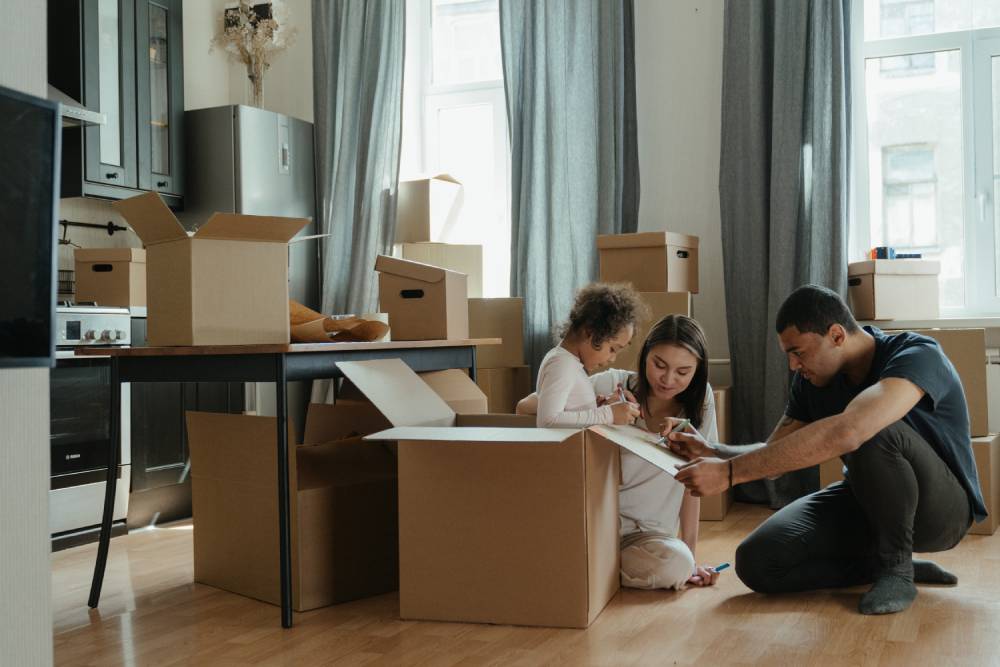
89. Prepare for Being a New Homeowner
As a first-time homeowner, there may be some new responsibilities you might need to become more familiar with, such as adjusting your home’s humidity, taking care of the hot water tank, and other maintenance tasks.
At Shane Homes, we want to make this experience as stress-free as possible, which is why we created home maintenance videos that will answer any questions you may have about owning and maintaining a new home.
90. Double-Check Your Home Warranty Policy
If you live in an older home, chances are you won’t have a home warranty policy.
However, if you build a new home, you will have an Alberta New Home Warranty that protects you against defects in materials and workmanship for a minimum of five years.
Some builders also offer additional warranties. For example, Shane Homes provides a one-year warranty package for protection against defects in materials or workmanship and a 10-year warranty for any additional structural items. This warranty is important to protect your home in the event of an unexpected defect.
91. Review Your Documents Thoroughly
When you’re reviewing your home ownership documents, ensure that you look for any significant red flags.
For example, if you’re moving into a condo, double-check the history of condo fee rates, the capacity of the reserve fund, any upcoming or pending legal action with development, and if there are any mentions of major repairs. When purchasing a home, you must understand all things regarding your property.
92. Don’t Obsess Over the Real Estate Market
The housing market fluctuates constantly, and if you obsess over the current market, you may lose out on a really great deal or opportunity.
93. Take Your Time
Buying a home is the next step in your future plans, but this doesn’t mean you should rush the process.
Slow down; you will find the home of your dreams.
94. Don’t Get Caught Up in One Home
When you go on your house hunt, ensure you look at all of the available options before purchasing the first home you see.
As a new home buyer, this experience can be quite exciting, but you don’t want to miss out on a better opportunity elsewhere.
95. Don’t Go House Hunting Alone
It’s important to get a second or third opinion on a home before you purchase it. You may become attached and start to overlook things that you would typically care about.
Getting a second opinion can validate your feelings towards a home.
96. Don’t Get Emotionally Attached to Your Home Until You Move in
Sometimes, things can change throughout the home-buying and buying process. Avoid getting attached to all of the elements in your home until they are complete and the house is ready for you to move in.
97. Be Thorough in Your Walk-Through
When your house is built, your project manager will walk you through the home and ensure it’s exactly as you’ve planned.
During this process, you will have the opportunity to tape and mark down any chips in the walls, paint on the floor, or other minor blemishes that may have occurred throughout the building process.
98. Make Your Own Decisions
Although realtors and area managers are there to guide you through the home-buying process, ensure you are still making your own decisions and using critical thinking with each step of the process.
99. Save Physical Copies of Your Paperwork
If you’re prone to misplacing items, consider purchasing a little file folder or cabinet so you can store the physical copies of your paperwork in a safe location.
An example of an important document is your Real Property Report (RPR), which is a high-level drawing of the property outlining the correct address, property line, and more. If you go to sell your home, you must provide the Real Property Report. If you lose it, you will need to purchase a new one.
100. Focus on Your Needs VS Wants
You want to stay conscious of your budget when buying a home. If you are trying to cut your purchase price, think about if you NEED heated bathroom floors or if you NEED air conditioning. These are wonderful features to have, but only if you can afford them.
101. Understand What You Need in a Home
Overall, you should create a must-have and nice-to-have list of home features you’d like to have in your dream home based on your lifestyle and future goals.
Get the Most out of Your Home With Shane Homes
After those 101 tips, are you feeling more ready to build your dream home?
Should you have any questions about the home-building process, reach out! At Shane Homes, we’re here to make your home-buying and building experience as seamless as possible.
For over 45 years, Shane Homes has helped many first-time home buyers build the homes of their dreams, and we’re ready to add you and your family to that list.
If you’re ready to find the perfect home for you and your family, check out our build and price tool. With this tool, you can check out communities, home styles, and home types, all while customizing your home just the way you want it.
Once you’ve created your dream home, visit a Shane Homes showhome, or contact us today!
We’re looking forward to helping you.
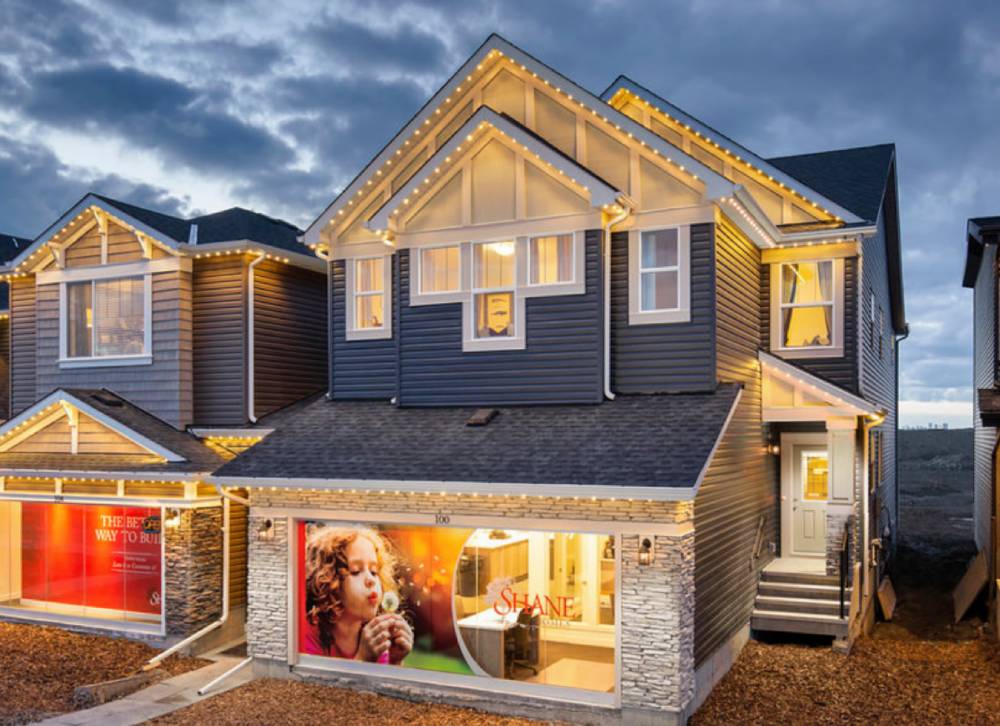







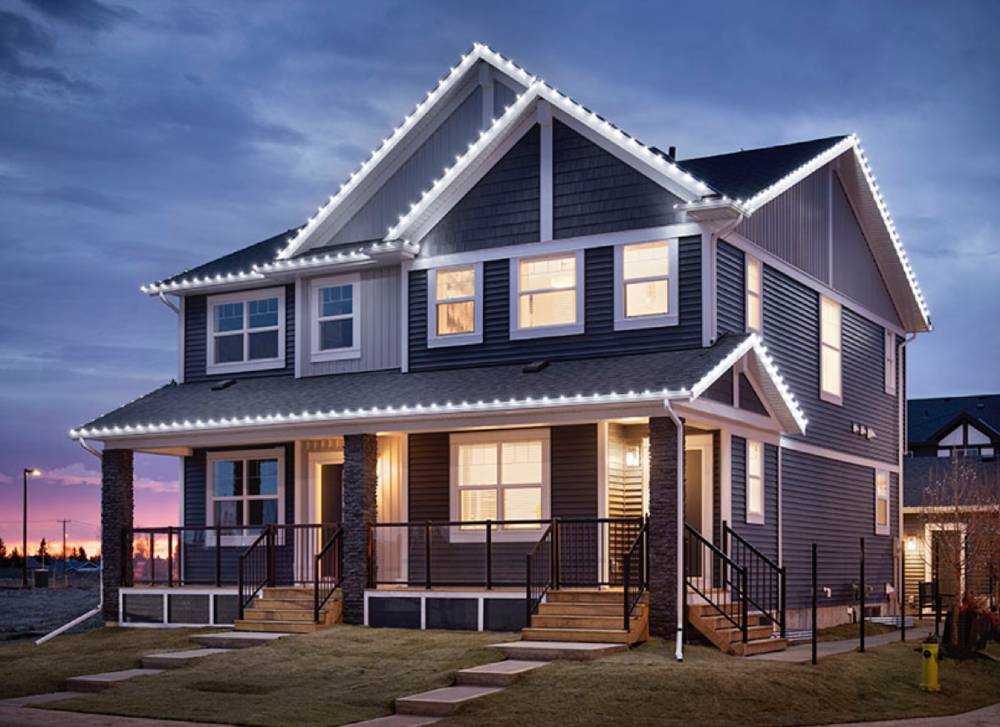
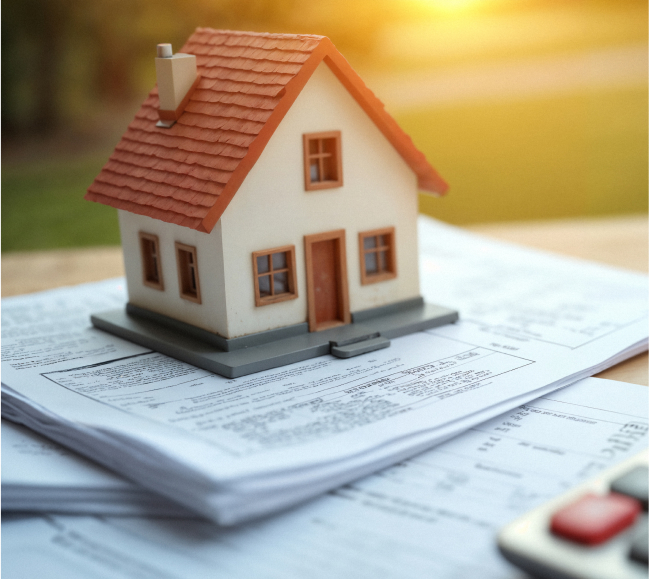




![We're very excited about our new duplex model, the Cavell.
This spacious paired home features a main floor bedroom and bathroom as well as 3 spacious bedrooms on the second floor and a flexible family room.
Explore the floorplans over on our website [link in bio]
*Artist’s rendering only
#calgary #calgaryhomes #calgaryhomebuilder #newhomescalgary](https://www.shanehomes.com/wp-content/uploads/sb-instagram-feed-images/571373283_18542256256032008_5820328219297504367_nfull.webp)


